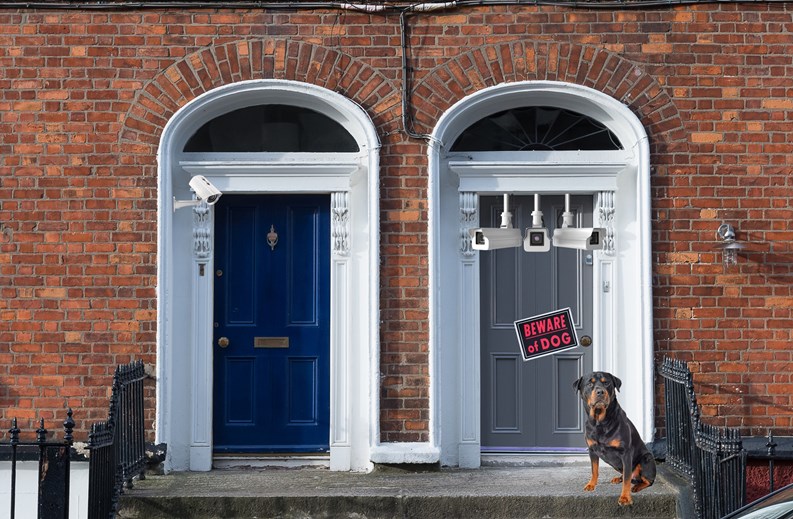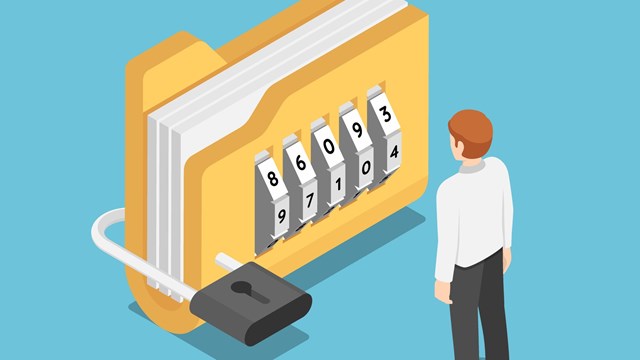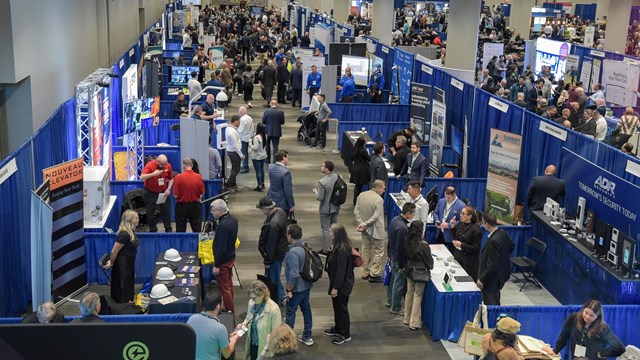The days when an apartment building’s ‘security system’ consisted of a tricky front door lock and the landlord’s ill-tempered dog are long past. Today, security measures range from old-style deadbolts to high-tech biometric screening equipment, with a lot of technology in between that includes both electronic and human components. For condo association board members and others living in multifamily buildings or developments, understanding the functions and necessities of these security components is essential to having a safe community. Any resident should know how these various measures interlock to form a web of protection for them and their property.
Knowing What You Need
But how should a residential high-rise or association pinpoint its ideal level of security? Such an inquiry starts with determining the criteria the building’s management should take into account when considering a security installation or upgrade. Particularly in these sometimes stressful economic times, cost often is the most important factor for a board to consider when determining its community’s security needs.
“There’s a big difference in the way security is handled between HOAs, townhomes, and high-rise condo associations,” says Emmett Frederick, Vice President and General Manager of Interstate Security Services in Las Vegas. “Number one, HOA communities usually involve more enforcement activities like gate access, patrol, and even speed control—all the things police can’t do on private property.”
Because failing to provide adequate security could be the basis of a lawsuit if a major crime is committed or a person is harmed, adequate security for condo associations and HOAs is about dollars and cents as much as it is about life and limb. Lawsuits against an HOA for inadequate security could be time-consuming, and also expensive to all of the community’s residents. That’s why it is crucial for a board to conduct a thorough evaluation of their community’s security needs at least every few years, residential security experts say.
Costly Inaction
Many court cases have established that providing a safe atmosphere for residents is an obligation of the building’s management. But the idea of “adequate” security for a building is something of a moving target—depending upon the neighborhood, or even on the block in which the building is located, or the day, month, or time of year, what could be deemed as adequate security at one moment might be seen as lacking later.
“The most important aspect of security arrangements in a high-rise condo association are the evacuation procedures,” says Frederick. “What to do in the event of an emergency. How do people get out? You have to have an evacuation plan posted on each floor, and a fire control system throughout the building. Security must check it every 24 hours to make sure the pumps are working, and there must be a meeting area for the residents. You also have to keep a ‘fire box’ [with] information on residents with disabilities so the fire department can assist them. Also, there are two radios in the box; one for the security firm, and one for the fire department to guarantee communications.
“The other big problem in security in high-rise buildings is the parking garage,” Frederick continues. “Once someone gets into the garage they can get into the building. Most now have cameras so we can monitor what’s going on, what activity there is in the garage. Residents too often give the code numbers for the garage to just about everyone, and that creates a serious security problem.”
In considering a community’s security system and needs, management should assess not just issues within the building or association, but the history of the surrounding neighborhood. This can be done by checking police records and by polling residents regarding problems in the public areas of the building, and finding the places where security should be tightened up, says Jordan Lubitz, owner of Jordan Intercom & Mailbox Service Co. Inc., based in the Bronx, New York. “It’s important to remind people that it’s not impolite to not hold the door open for someone you don’t know—they could have no business there.”
“In townhome communities, the biggest problem is resident complaints,” adds Frederick. “You have a lot of issues concerning parking and noise. The police can’t do anything about this. They don’t respond to these kinds of calls, so the residents call security. We respond and investigate. If the police are needed, we call them.”
A building’s issues regarding access and control of parts of the security system could be as particular as the group of people living in the place. Some communities are filled with residents who don’t want to know much about the security system, as long as it works. In other communities in which there are many retirees, streaming video footage of images from the security cameras can be accessed by residents of individual units, via their television sets. The management of some buildings finds it necessary to have a security guard, while others do not, or feel the residents can’t support the extra cost of more paid employees.
Manning the Gates
As with the potential sale price of an individual condo unit, location is a key factor in determining the level of security needed for the community. The neighborhood in which the building or HOA is situated, or even the street along which it stands, could have an effect on the level of security needed, says Mark Lerner, Ph.D., President of New York City’s EPIC Security Corp., which provides both security consulting services as well as guards and technology.
Many buildings have a closed-circuit television (CCTV) system, with a modern DVR recording system attached to it. The device allows management and staff to monitor lobbies and other more public areas of the building, to ensure that no one is gaining access to the property when they should not. More often than not, though, the device is used merely to record what’s happening in those areas, and the recording can be accessed later if a crime has been committed.
Many of the newer CCTV systems have wireless cameras that can be moved around, depending upon the need for tighter security in another part of the building. For example, a building resident might go away for several months and leave the apartment to the use of his children, who have loud parties or may be involved in illicit activity. After receiving complaints about such a scenario, the building’s management could hide a camera in the hallway outside the unit, to monitor the comings and goings of those who visit and live in the apartment.
This sort of snooping might seem not quite neighborly, but it is not illegal. Since the hall is a public area that must be secured for all of the residents, management can easily justify taping activity there. Despite such measures, many criminals actually ignore the cameras and commit crimes in front of them, experts say.
“Be advised that CCTV is good for solving crimes – but it is not good as a deterrent,” Lerner says. “For a deterrent, you need personnel. The more uniformed personnel you have, the greater the deterrent will be.”
Giving the Once-Over
According to the pros, when assessing a building’s security, management should first ensure that the building entrance is secure. Next, they should look at the outer perimeter doors, such as side doors, gates from alleys, and other entrances to make sure they are continuously secured. Then management should assume that every visitor to the building is a potential problem, and they should ensure that visitors are doing what they say their purpose for being there is. This can be assessed by monitoring the building’s CCTV system.
Management also should make sure that side doors are rigged with an alarm that sounds, to prevent their use in any event but an emergency. Finally, management should train building personnel and residents to be polite, but vigilant. “Only let people in who you know,” says Mark Berger, President of Securitech Group Inc., in Queens, New York.
For some buildings, a minimum level of security could be an intercom system at the front door, and an electronic access system coupled with a low-tech latch type lock on the door. For larger buildings, adequate security would include a security guard monitoring the building’s entrance.
When it comes to potential court cases involving allegations of improper security in a residential building, many precedents have been set regarding what is considered a minimum level of security, says Edward Katta, Vice President of Sales for Bay Ridge Security in Brooklyn, New York. “The most important factors are do the doors work, and is there an intercom system in place,” he says.
Jonathan Barnes is a freelance writer and a regular contributor to The Nevada Cooperator and other publications.







Leave a Comment